A small Boston apartment transformed its cramped 200-square-foot living room into an enchanting oasis using strategic plant placement and thoughtful design principles. You’ll discover how to maximize your space’s potential through nine distinct decorating styles that blend form and function. From minimalist arrangements that require just 2-3 statement plants to lush jungle-inspired layouts featuring 15+ varieties, these carefully curated approaches will help you create your ideal plant sanctuary.
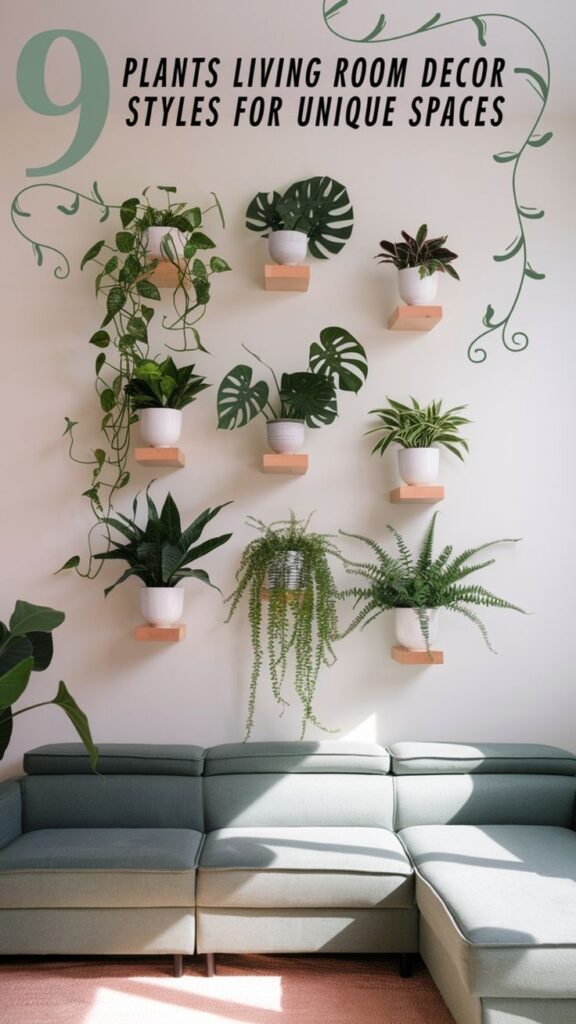
Contents
Modern Minimalist Plant Styling
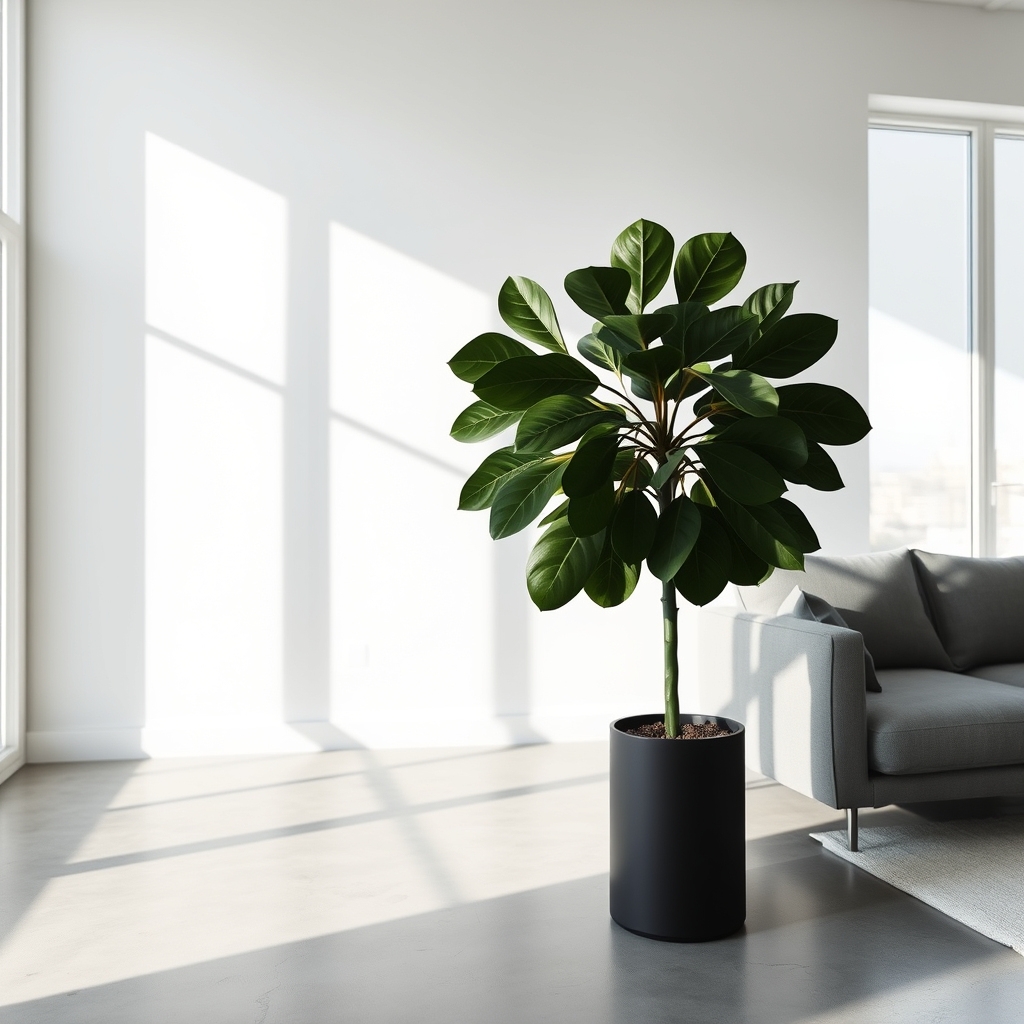
Modern Minimalist Plant Styling focuses on clean lines, uncluttered spaces, and carefully selected statement plants.
The style features a restrained approach with minimal plant varieties, often displaying single specimens in sleek, geometric planters. White, black, or neutral-colored containers complement the understated aesthetic, while plants with strong architectural forms like snake plants, fiddle leaf figs, or monstera take center stage.
Plants are typically positioned against clean walls or in designated corners to create visual breathing space. The arrangement emphasizes negative space and avoids overcrowding, following the “less is more” principle.
Common elements include raised plant stands with simple designs, monochromatic color schemes, and plants with bold, structural shapes that serve as living sculptures in the space.
Bohemian Jungle Vibes
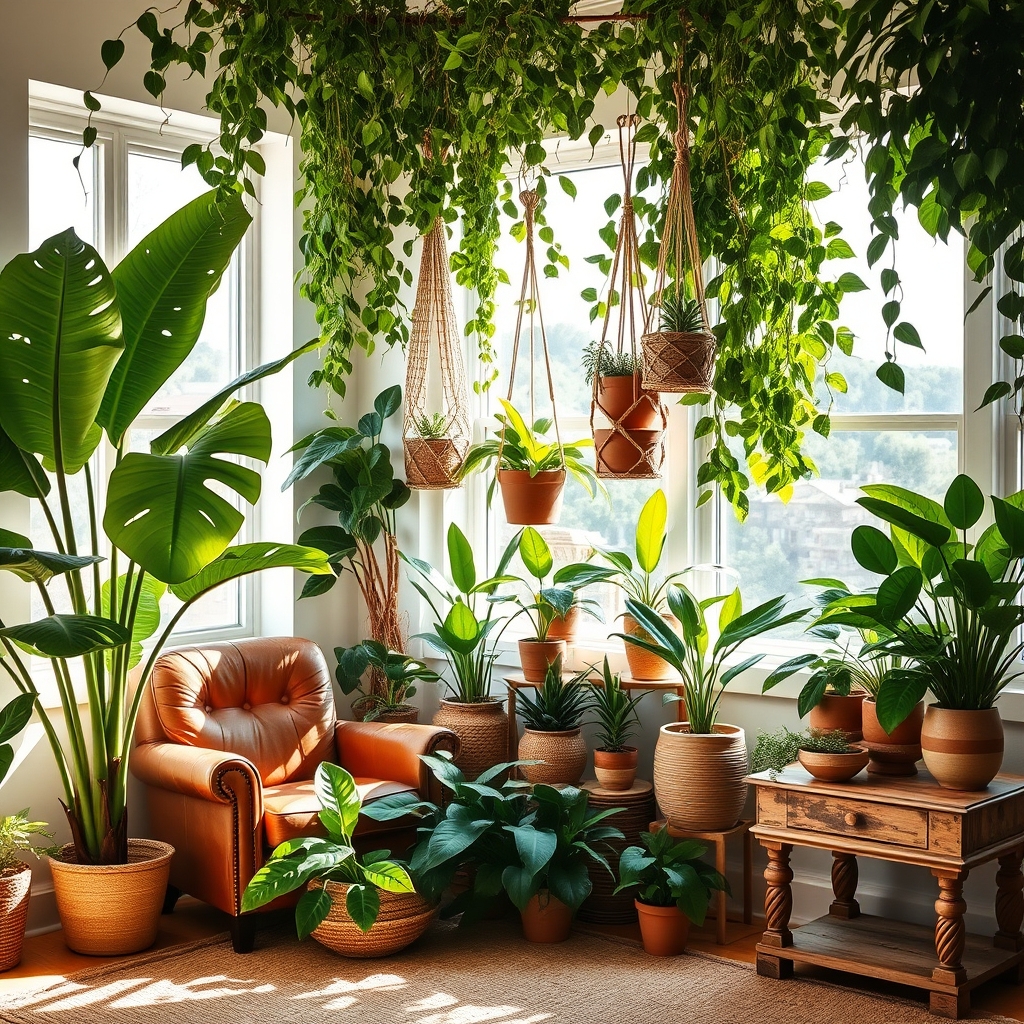
Bohemian Jungle Vibes creates a wild, free-spirited atmosphere by combining lush greenery with eclectic decor elements. This style features an abundance of trailing plants, large-leafed specimens, and multiple plant layers at varying heights.
Plants commonly used include monstera, pothos, philodendrons, and hanging ferns.
The look incorporates natural materials like woven baskets, macramé plant hangers, and carved wooden plant stands. Plants are displayed in mismatched pottery, vintage containers, and handcrafted vessels.
Floor plants, hanging plants, and clustered arrangements create a dense, jungle-like canopy effect.
Characteristic elements include:
- Mixed textures and patterns
- Natural fiber accents
- Organic shapes and forms
- Layered plant arrangements
- Earthy color palettes
- Informal, casual placement
- Multiple plant species grouped together
- Vintage and handmade decorative elements
This style embraces imperfection and natural growth patterns, allowing plants to cascade and spread freely within the space.
Vertical Garden Arrangements
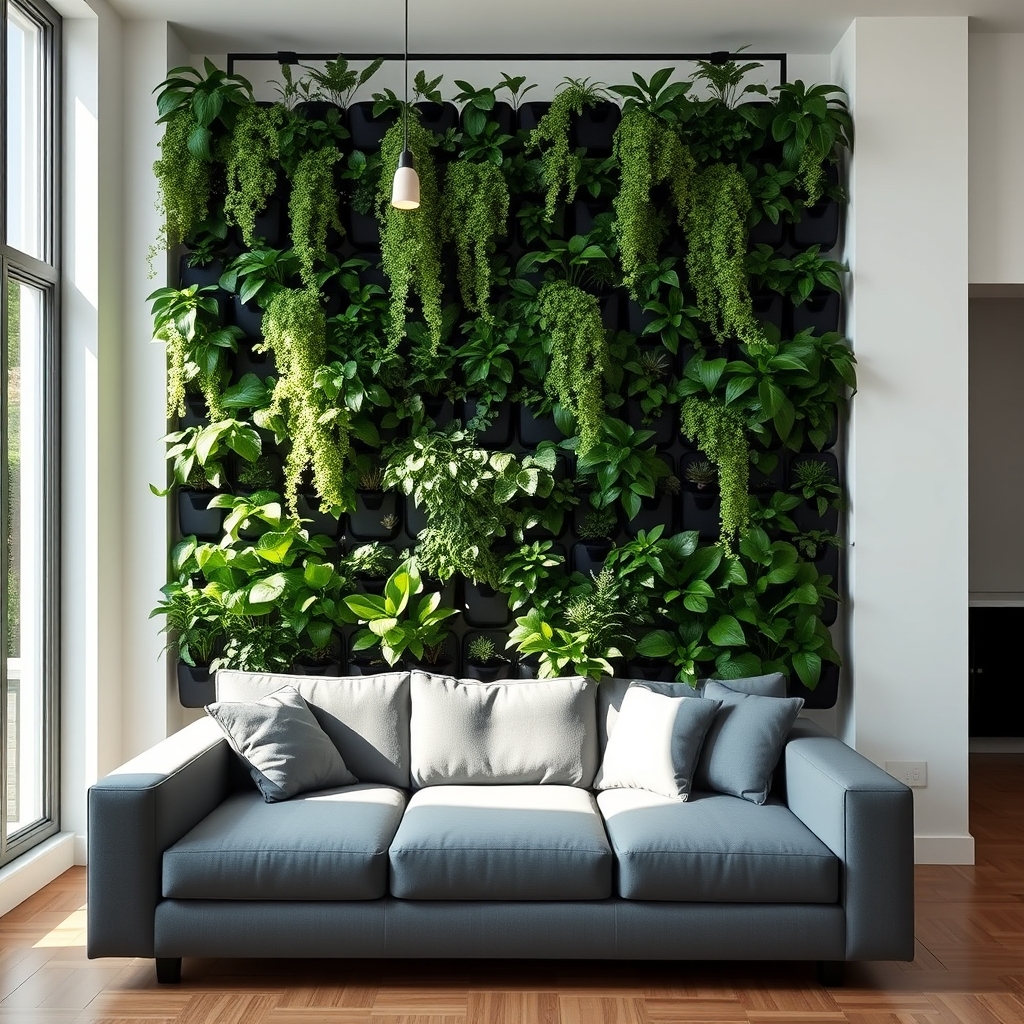
Vertical garden arrangements transform living room walls into lush, living tapestries by mounting plants in upward-oriented configurations. These installations typically feature a mix of trailing, climbing, and compact plants arranged on specialized wall-mounted panels, pocket planters, or modular systems.
Plants are strategically positioned at different heights, creating dynamic layers of foliage that maximize vertical space while minimizing floor footprint.
Key features include:
- Wall-mounted frames or grid systems
- Multiple planting pockets or containers
- Integrated irrigation systems
- Mix of plant textures and sizes
- Space-saving design
- Built-in drainage solutions
Common vertical garden styles range from simple hanging planters to elaborate living walls with automated watering systems.
Plants frequently used include pothos, ferns, air plants, succulents, and philodendrons, selected for their adaptability to vertical growing conditions and varying light requirements.
The overall effect adds dramatic visual interest to living room walls while improving air quality and acoustic properties of the space.
Structured Geometric Plant Displays
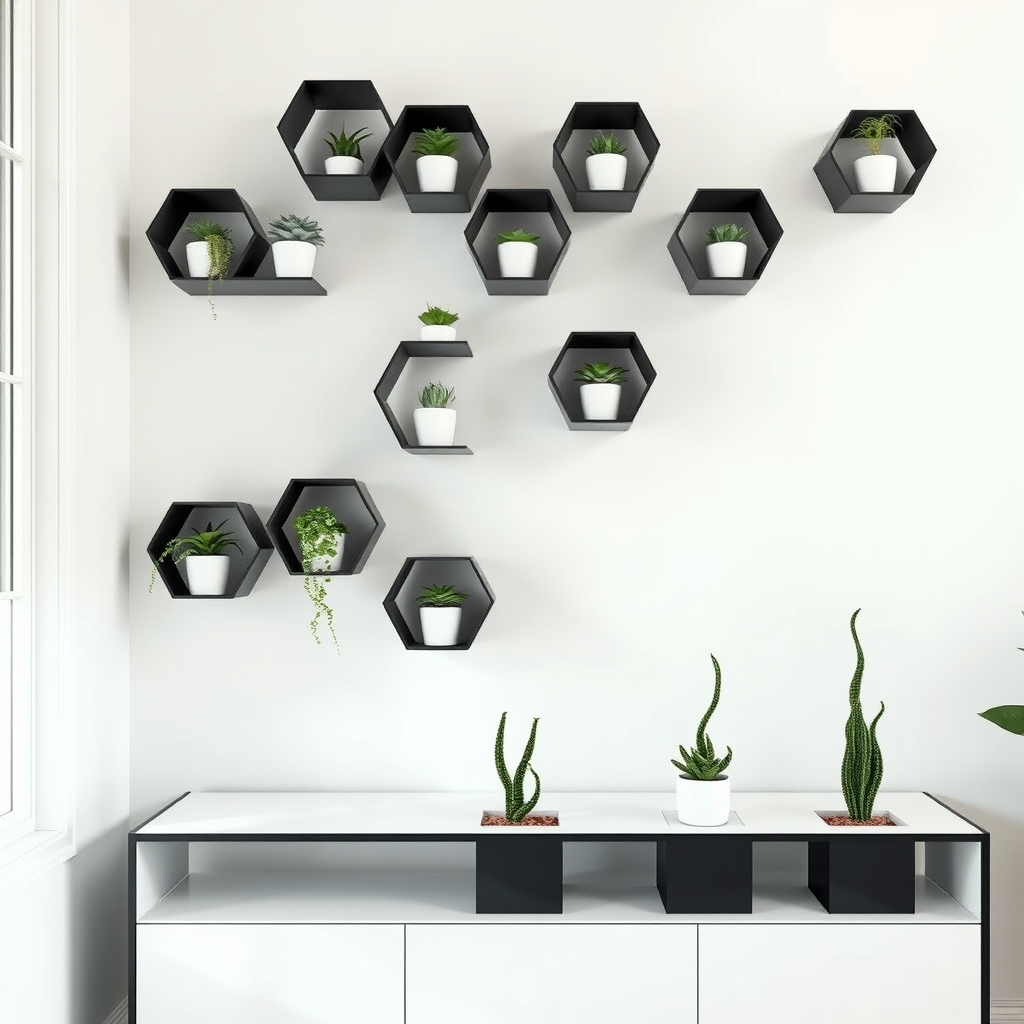
Structured geometric plant displays combine architectural precision with natural elements to create organized, visually striking arrangements in living spaces.
These displays feature plants arranged in clearly defined shapes and patterns – like grids, triangles, or symmetrical groupings – often using matching containers or geometric shelving units. Plants are typically positioned at varying heights and depths to create dimension while maintaining clean lines and mathematical harmony.
Common elements include:
- Wall-mounted hexagonal or square shelving units holding small plants
- Linear arrangements of identical planters spaced at equal intervals
- Tiered plant stands with angular or cubic designs
- Modular plant display systems forming precise patterns
- Minimalist containers in basic geometric shapes
- Deliberately spaced groupings forming larger geometric shapes
- Plants selected for their structural growth patterns or architectural foliage
This style appeals to those who prefer modern, controlled aesthetics while incorporating natural elements into their decor.
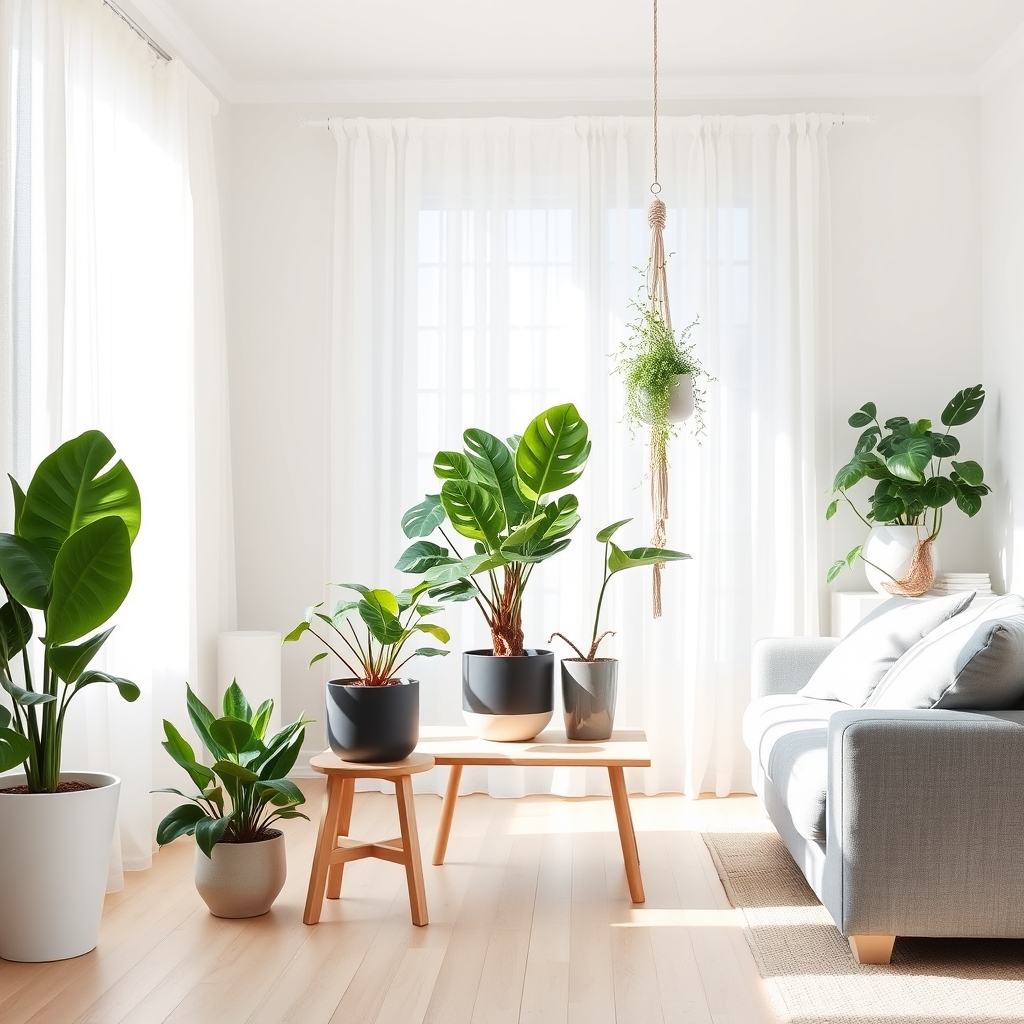
Scandinavian-Inspired Plant Decor embodies minimalist design principles with clean lines and a light, airy aesthetic. The style features carefully curated plant arrangements against white or neutral walls, typically displaying specimens in simple white, natural wood, or matte black planters.
Common elements include suspended hanging plants in macramé holders, clustered potted plants on sleek plant stands, and statement plants like Fiddle Leaf Figs or Monstera placed in corners.
Key characteristics:
- Limited color palette focused on whites, grays, and natural tones
- Emphasis on negative space and decluttered arrangements
- Natural materials like birch, pine, and cotton rope
- Mix of different plant heights and textures
- Focus on hardy, architectural plants with striking foliage
- Simple geometric planters without ornate details
- Integration with light woods and natural textiles
The style prioritizes functionality while maintaining visual harmony, creating a calm and organized environment that connects indoor spaces with nature.
Statement Corner Plant Collections
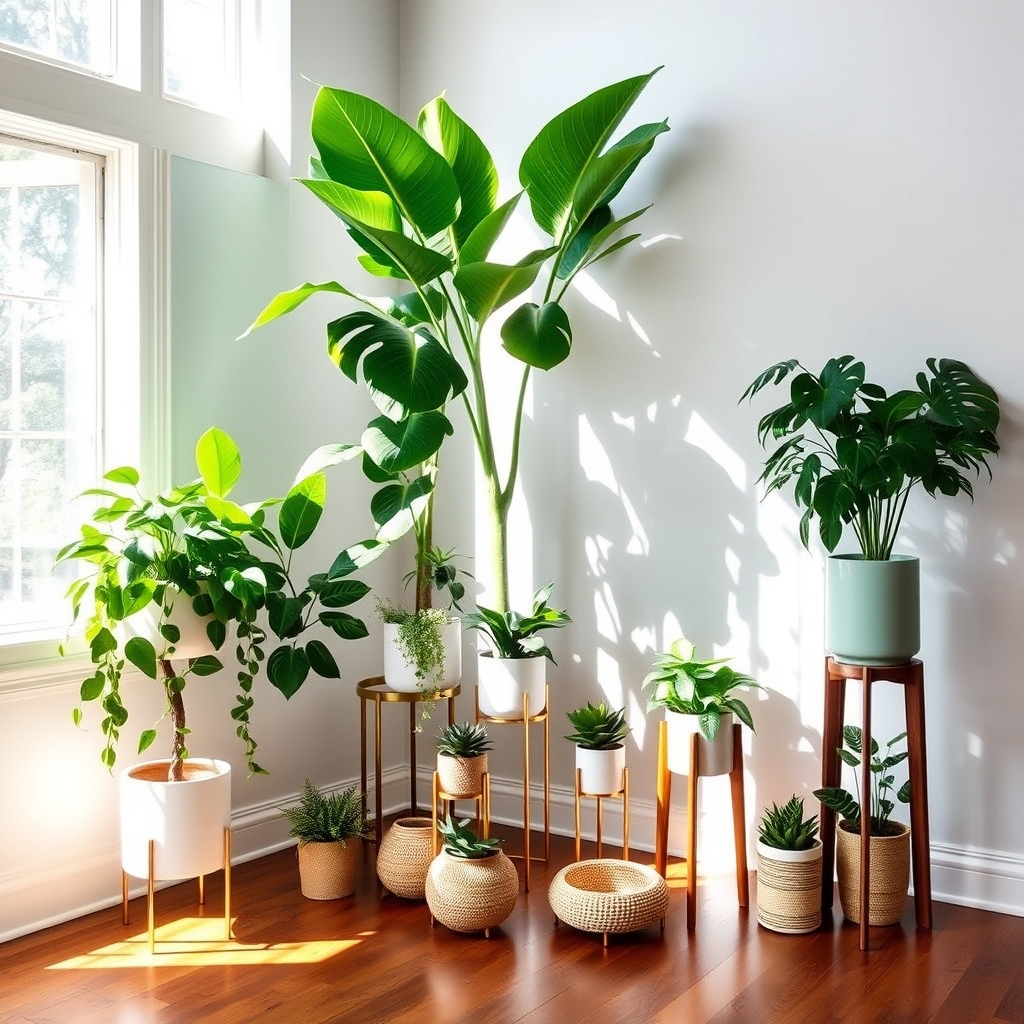
Statement corner plant collections transform empty room corners into dramatic focal points by grouping multiple plants of varying heights, textures, and sizes.
These collections typically feature a tall anchor plant like a Fiddle Leaf Fig or Bird of Paradise, complemented by medium-height plants and trailing varieties arranged on tiered stands or plant pedestals.
The layered arrangement creates visual interest from floor to ceiling, while the clustering of different plant species adds depth and dimension to otherwise underutilized corner spaces.
Strategic lighting and decorative pots in coordinating styles enhance the display’s impact, turning an ordinary corner into a striking botanical vignette.
Floating Shelf Plant Designs
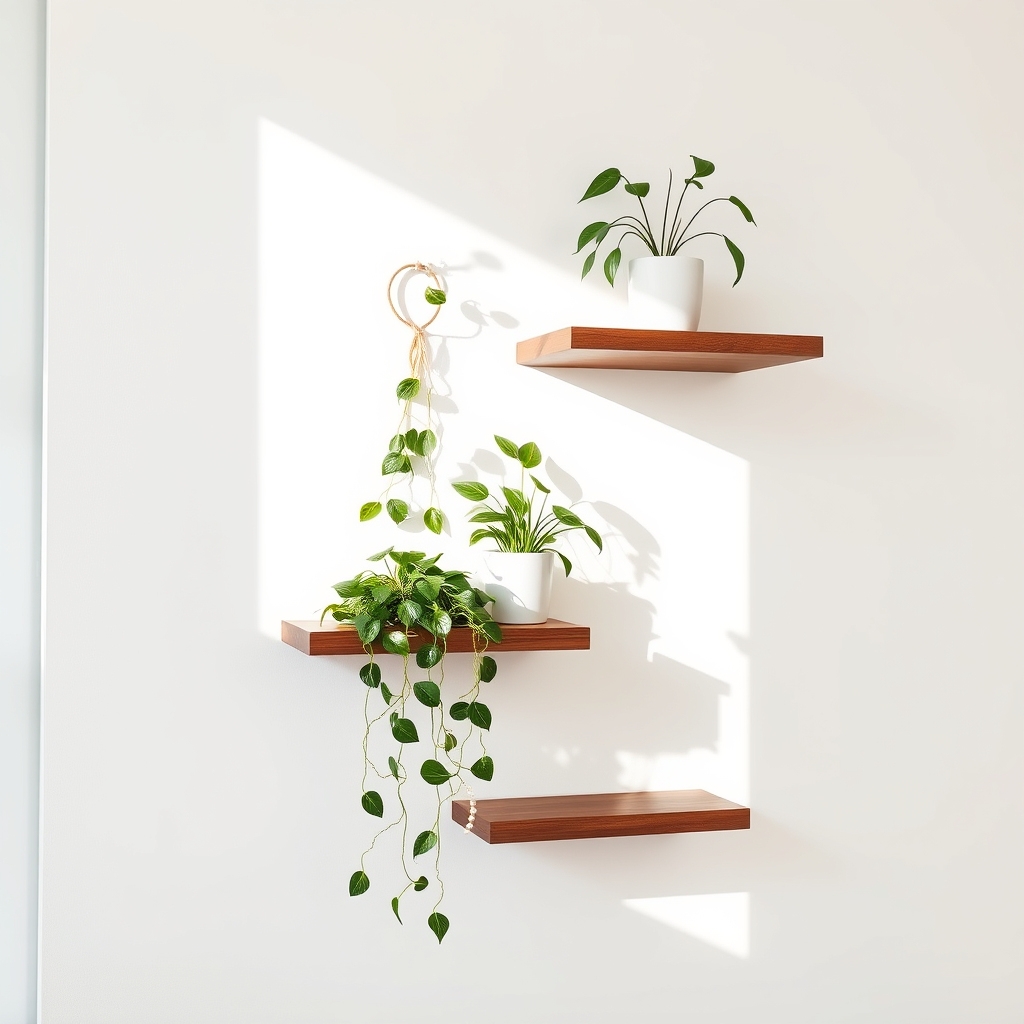
Floating shelf plant designs transform walls into vertical gardens by featuring sleek, wall-mounted shelves that appear to hover without visible support brackets.
These minimalist shelves create a clean, modern aesthetic while displaying potted plants at varying heights and depths. Plants cascade over edges or stand upright, creating dynamic layers of greenery against the wall.
Common configurations include single floating shelves, staggered arrangements, or geometric patterns that allow for creative plant groupings.
The design maximizes floor space while adding visual interest through the interplay of plants, shadows, and negative space.
Materials typically include wood, metal, or acrylic in various finishes to complement existing room décor.
Window-Focused Plant Layouts
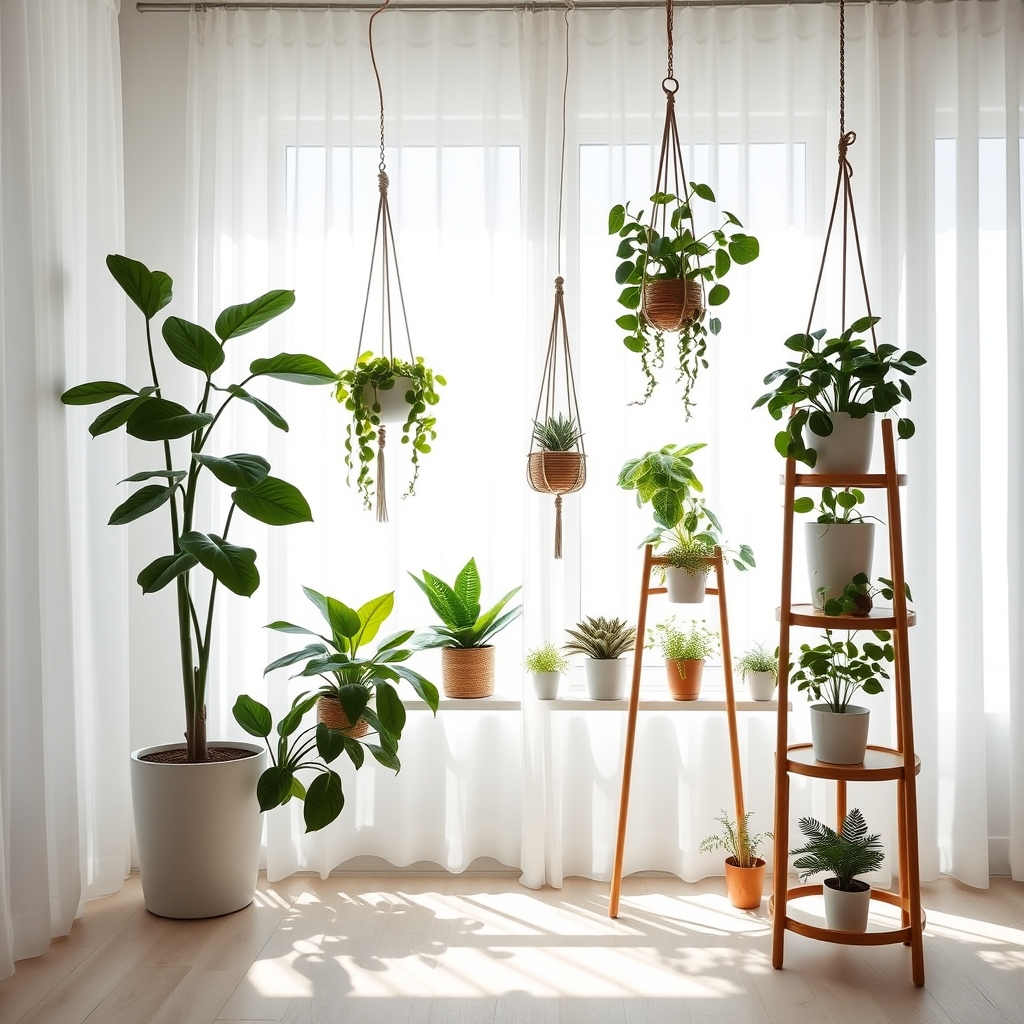
Window-Focused Plant Layouts transform windows into living green showcases by strategically positioning plants to maximize natural light exposure.
Plants are arranged in graduated heights, with taller specimens placed further from windows and shorter ones closer to the glass. Common configurations include tiered plant stands, hanging baskets at varying levels, and window sill arrangements featuring trailing plants like pothos or string of pearls.
This layout style typically incorporates light-loving plants such as fiddle leaf figs, monstera, and various ferns positioned to create a natural frame around windows.
Plant shelves, macramé hangers, and floating glass shelves are often used to create vertical interest while preserving floor space. The arrangement not only optimizes plant health through proper light exposure but also creates an organic transition between outdoor and indoor spaces.
The distinctive feature of this layout is its ability to create a greenhouse-like effect in regular living spaces while maintaining functionality and visual balance.
Plants appear to flow from the window into the room, creating depth and drawing the eye naturally toward the natural light source.
Mid-Century Modern Plant Aesthetics

Mid-Century Modern Plant Aesthetics combines clean lines, organic shapes, and minimalist design elements typical of the 1950s and 1960s era.
Plants are displayed in sleek, geometric planters made of materials like ceramic, brass, or teak wood, often elevated on slim plant stands with tapered legs. Common plant choices include sculptural specimens like snake plants, fiddle leaf figs, and rubber plants, which complement the period’s emphasis on bold, architectural forms.
Distinctive features include:
- Angular or round planters with simple silhouettes
- Plant stands featuring hairpin legs or splayed wooden legs
- Focus on height variation and asymmetrical groupings
- Natural materials paired with metal accents
- Emphasis on statement plants with strong vertical growth
- Limited color palette featuring earth tones and metallic finishes
The style prioritizes functionality while maintaining visual interest through careful plant placement and thoughtful container selection.
